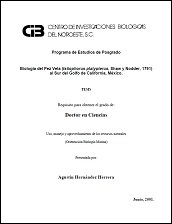Diagnóstico de nutrimento compuesto e interacciones nutrimentales en chile Jalapeño (Capsicum annuum L.) en suelos semiáridos
Autor
JOSE APOLINAR RAMIREZ IBARRA
ENRIQUE TROYO DIEGUEZ
PABLO PRECIADO RANGEL
MIGUEL ANGEL GALLEGOS ROBLES
CIRILO VAZQUEZ VAZQUEZ
JUAN LUIS RIOS PLAZA
JOSE LUIS GARCIA HERNANDEZ
Metadatos
Mostrar el registro completo del ítemResumen
"Es fundamental conocer los requerimientos nutricionales específicos de cada genotipo de chile, así como
su interacción con los diversos ambientes donde se produce. Los objetivos de este estudio fueron estimar las normas
nutrimentales mediante la técnica de diagnóstico de nutrimento compuesto (DNC) de chile jalapeño Autlán en la
Comarca Lagunera; y analizar las interacciones nutrimentales entre los nutrimentos y su relación con el rendimiento por
medio de correlaciones. Se tomó una muestra de 100 plantas a las que se les determinó el contenido de N, P, K, Ca
y Mg, para correlacionarlas con el rendimiento. Se calculó un rendimiento mínimo de referencia de 52.09 t ha−1
y se
determinaron los rangos óptimos de estos macro-nutrimentos en el tejido foliar de N (4.57 ± 0.25), P (0.18 ± 0.03),
K (6.80 ± 1.04), Ca (2.46 ± 0.17) y Mg (0.64 ± 0.07) para la obtención de altos rendimientos. El orden decreciente
de extracción de nutrimentos en la oración fue K > N> Ca > Mg > P, patrón similar al de otros cultivares de chile,
pero que diere de otras especies cutivadas como la sábila (Aloe vera L.) o el nopal (Opuntia cus-indica L.). Se
presentaron los sinergismos: N y P, N y K, P y K, y Ca y Mg. Mientras que el fósforo fue el único nutrimento que
presentó correlación positiva con el rendimiento." ". It is fundamental to know nutrimental requierements of every hot pepper genotype, as well as its
interaction with the several environments where it is cropped. The aims of this study were to estimate nutrient norms
by using the technique of compositional nutrient diagnosis (CND) for hot pepper type jalapeño Autlán in the Comarca
Lagunera during the cycle spring-summer 2013 and to analize the nutrimental interactions among the nutrients and
its relationship with yield by using the Pearson correlations approach. With this purpose, it was taken a sample 100
plants on which was determined the content of N, P, K, Ca and Mg and determinations were correlated to yield. It
was calculated a minimum reference yield of 52.09 t ha−1
and optimal ranges of these macro-nutrients on foliar tissue
were determined as follow N (4.57 ± 0.25), P (0.18 ± 0.03), K (6.80 ± 1.04), Ca (2.46 ± 0.17) y Mg (0.64 ± 0.07)
for achievement of high yields. Decrecent order of nutrimental extractions on owering stage were K > N> Ca > Mg
> P, similar pattern of other pepper cultivars, but notabilly dierent to other cropped species as sábila (Aloe vera L.)
or nopal (Opuntia cus-indica L.). There were observed the folloeing sinergisms N and P, N and K, P and K, Ca and
Mg. While phosphorus was the unique nutrient that showed positive correlation to yield."
Colecciones
Ítems relacionados
Mostrando ítems relacionados por Título, autor o materia.
-
PROMOCIÓN DEL PERIFITON PARA EL CULTIVO DE CAMARÓN BLANCO: HACIA UNA ACUICULTURA ECOLÓGICA
DOMENICO VOLTOLINA LOBINA; JUAN MANUEL AUDELO NARANJO; MARIA DEL ROSARIO PACHECO MARGES -
Suelo y Erosión
YOLANDA LOURDES MAYA DELGADO


